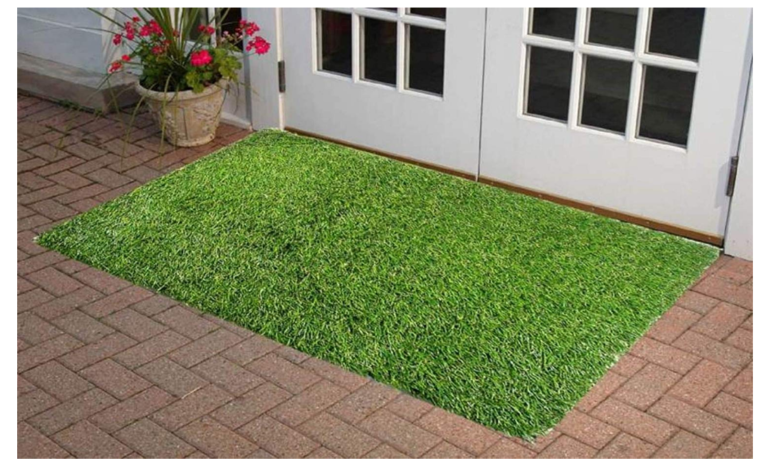Choosing the Right Herbicides for Weed Control in Your Lawn

Welcome to our blog where we dive into the nitty-gritty of lawn care and help you achieve that lush, green carpet of grass you’ve always dreamed of. Ah, but there’s a pesky problem that keeps popping up – those stubborn weeds! Fear not, dear reader, for today we are tackling the topic of choosing the right herbicides for effective weed control in your lawn.
Weeds have a knack for infiltrating our perfectly manicured lawns and wreaking havoc on our landscaping efforts. But fear not, because armed with the right knowledge and tools, you can regain control over your turf kingdom. In this article, we will explore factors to consider when selecting an herbicide, different types available on the market today, how and when to apply them properly, as well as alternative methods for weed management.
So put on your gardening gloves and let’s dig in to discover which herbicides will help banish those unwanted intruders from your lawn once and for all!
Factors to Consider When Choosing an Herbicide
When it comes to choosing the right herbicide for weed control in your lawn, there are several factors that you should take into consideration. First and foremost, you need to identify the type of weeds that you are dealing with. Different herbicides are designed to target specific types of weeds, so knowing what you’re up against is crucial.
Another important factor to consider is the season and weather conditions. Some herbicides work best when applied in certain temperatures or when the weeds are actively growing. It’s also essential to consider whether the herbicide will be safe for other plants in your lawn or garden.
The size of your lawn or garden area is another factor to keep in mind. If you have a large area to treat, you may want to choose a herbicide that can be applied using a sprayer or spreader for more efficient coverage.
Additionally, consider whether you prefer organic or synthetic options. Organic herbicides are derived from natural sources and tend to be safer for people, pets, and the environment. On the other hand, synthetic herbicides often provide faster results but may have more potential side effects.
Always read and follow the instructions provided by the manufacturer carefully. This will ensure that you use the product correctly and get optimal results while minimizing any negative impacts on your lawn or surrounding areas.
By considering these factors before selecting an herbicide, you’ll be well-equipped with knowledge on how best to eradicate those pesky weeds without causing harm elsewhere!
Different types of herbicides
When it comes to weed control in your lawn, choosing the right herbicide is essential. There are various types of herbicides available on the market, each targeting different types of weeds and working in different ways. Here are some common types:
1. Pre-emergent herbicides: These are applied before weeds germinate and form a protective barrier on the soil surface, preventing weed seeds from sprouting.
2. Post-emergent herbicides: These are used after weeds have already emerged from the ground. They target existing weeds and can be selective or non-selective, depending on whether they only kill certain types of plants or all vegetation.
3. Selective herbicides: These are designed to target specific types of plants while leaving desirable plants unharmed. For example, you can find selective herbicides for broadleaf weeds that won’t harm your grass.
4. Non-selective herbicides: These will kill any plant they come into contact with, making them useful for clearing large areas or tackling stubborn perennial weeds.
It’s important to choose an appropriate type based on the specific weed problem you’re dealing with and the desired outcome.
When to use herbicides
Knowing when to use herbicides is crucial for effective weed control in your lawn. Timing is key, as applying the right herbicide at the right time can maximize its effectiveness and minimize any negative impact on your lawn.
One important factor to consider is the stage of weed growth. Herbicides are most effective when applied during the early stages of weed development. This is when weeds are actively growing and more susceptible to chemical treatments.
Another consideration is the weather conditions. It’s best to apply herbicides on a calm, dry day with temperatures between 60°F and 80°F. Avoid windy days as it can cause drift and potentially damage desirable plants nearby.
Additionally, you should assess the severity of weed infestation before deciding to use herbicides. If only a few weeds are present, manual removal may be sufficient without resorting to chemicals. However, if there is widespread or persistent weed growth that manual methods cannot handle effectively, using an appropriate herbicide becomes necessary.
Follow label instructions carefully regarding application timing intervals. Some herbicides require multiple applications over several weeks for optimal results.
By considering these factors, you can determine the best time to use herbicides in order to achieve successful weed control in your lawn without harming other plants or compromising environmental health.
How to apply herbicides
Applying herbicides properly is crucial for effective weed control in your lawn. Here are some tips on how to apply herbicides correctly.
First, make sure you read and follow the instructions provided by the manufacturer. Different types of herbicides may have specific application guidelines that you need to adhere to.
Before applying the herbicide, it’s important to prepare your lawn. Remove any debris or dead plants from the area, as these can interfere with the effectiveness of the herbicide.
Next, choose a calm day with little to no wind for application. This will help prevent drift and ensure that the herbicide lands where it’s intended.
When applying liquid herbicides, use a sprayer that is specifically designed for this purpose. Make sure to adjust the nozzle so that it delivers a fine mist rather than large droplets, which can lead to uneven coverage.
Walk at a steady pace while spraying and overlap each pass slightly to ensure even distribution of the product across your entire lawn.
After application, avoid mowing or watering your lawn for at least 24 hours, as this can wash away or dilute the herbicide before it has had a chance to work effectively.
Remember, always wear protective clothing and equipment when handling and applying herbicides. This includes gloves, long sleeves, pants, closed-toe shoes,and eye protection.
By following these steps and taking proper precautions during application,you can maximize the effectiveness of your chosen herbicide in controlling weeds in your lawn without causing harm to desirable plants.
Pros and cons of using herbicides
Using herbicides for weed control in your lawn can have both advantages and disadvantages. Here are some pros and cons to consider before deciding whether or not to use herbicides.
One of the main benefits of using herbicides is that they can effectively kill weeds, helping you maintain a beautiful and healthy lawn. Herbicides are formulated with specific chemicals that target unwanted plants while minimizing harm to desirable vegetation.
Another advantage is that herbicides provide long-lasting results. Once applied correctly, they can prevent weed growth for an extended period, reducing the need for frequent manual removal or other control methods.
Herbicides also offer convenience as they come in various formulations such as sprays, granules, or concentrates. This flexibility allows you to choose the most suitable option based on your specific needs and preferences.
However, it’s important to be aware of the potential drawbacks associated with using herbicides. One major concern is their environmental impact. Some herbicide ingredients may persist in soil or water systems, posing risks to non-target plants, animals, and ecosystems if used improperly.
Additionally, there is a possibility of human exposure during application or through contact with treated areas. It’s crucial to follow all safety guidelines provided by manufacturers when handling and applying herbicides.
Furthermore, certain types of weeds may develop resistance over time due to repeated exposure to the same type of herbicide. This means that relying solely on one product could eventually become less effective in controlling certain weed species.
Alternatives to herbicides
While herbicides can be effective in controlling weeds in your lawn, some people may prefer to explore alternative methods that are more environmentally friendly. Here are a few alternatives to consider:
1. Manual Weed Removal: One of the simplest and most natural ways to control weeds is by manually pulling them out from the root. This method requires some time and effort, but it allows you to target specific weeds without harming surrounding plants.
2. Mulching: Applying a layer of mulch around your plants can help suppress weed growth by blocking sunlight and preventing weed seeds from germinating. Organic mulches such as wood chips or straw also add nutrients to the soil as they break down.
3. Cultural Practices: Maintaining proper lawn care practices can go a long way in preventing weed infestation. Regularly mowing at the correct height, watering deeply but infrequently, and promoting healthy soil with adequate nutrients will create conditions that discourage weed growth.
4. Natural Herbicides: There are organic herbicides available on the market that use naturally derived ingredients like vinegar or citrus oil to kill weeds effectively without harmful chemicals.
5. Integrated Pest Management (IPM): IPM involves using a combination of different strategies such as biological controls (introducing beneficial insects), physical barriers (like landscape fabric), and crop rotation techniques to manage pests—including weeds—in an ecologically sound manner.
Remember, when exploring alternative methods for weed control, it’s essential to assess their suitability for your specific situation and follow best practices for optimal results!
Tips for Effective Weed Control
1. Regularly mow and maintain your lawn: Keeping your grass at the recommended height helps prevent weeds from taking over. It also promotes a healthier lawn by allowing sunlight to reach the soil.
2. Identify and target specific weeds: Different types of weeds require different treatments, so it’s important to accurately identify them before applying any herbicides. This will ensure that you choose the right product for effective weed control.
3. Apply herbicides strategically: Read the instructions carefully and apply herbicides only where needed, focusing on areas with heavy weed infestation. Avoid spraying on windy days to prevent drift onto desirable plants.
4. Follow proper timing: Herbicides are most effective when applied during active growth periods of targeted weeds. Applying them too early or too late may result in ineffective control.
5. Practice good lawn care practices: A healthy, well-maintained lawn is less susceptible to weed invasion. Proper watering, fertilizing, and aerating can help improve the overall health of your turfgrass and reduce weed problems.
6. Remove weeds manually: For small patches or individual weeds, hand-pulling or digging them out can be an effective method of control without relying solely on herbicides.
Remember that achieving optimal results requires consistency and patience. By following these tips along with selecting the right herbicide for your specific needs, you’ll be well on your way to maintaining a beautiful, weed-free lawn!
Conclusion
In this guide, we have explored the importance of choosing the right herbicides for effective weed control in your lawn. By considering factors such as weed type, application method, and environmental impact, you can make an informed decision that will benefit both your lawn and the surrounding ecosystem.
While herbicides can be a valuable tool for managing weeds, it is important to weigh their pros and cons. They offer convenience and efficiency but must be used responsibly to minimize potential harm. It’s also worth exploring alternative methods of weed control, such as manual removal or natural remedies.
Remember these key tips for effective weed control: identify the types of weeds present in your lawn, choose an appropriate herbicide based on its selectivity and mode of action, follow label instructions carefully when applying herbicides, and consider implementing preventive measures to reduce future weed growth.
Maintaining a healthy lawn requires regular maintenance and attention to detail. By incorporating proper watering techniques, mowing at the correct height, fertilizing appropriately, aerating when necessary,and promptly addressing any pest or disease issues,you can create a thriving environment that discourages weeds from taking hold.
Ultimately,the goal is to strike a balance between maintaining a beautiful landscape while minimizing negative impacts on human health and the environment.
So take care in selecting the right herbicides for your specific needs,and always prioritize responsible practices that promote overall well-being.
By following these guidelines,you’ll be well-equipped to tackle those pesky weeds while keeping your lawn looking its best.







